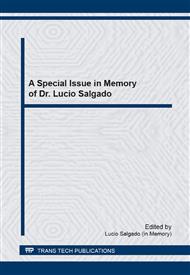p.403
p.409
p.415
p.422
p.429
p.435
p.442
p.448
p.454
Geroferenced Pest Control Management in Brazilian Citrus Production
Abstract:
One of the key challenges in the management of pest control in citrus production is ensuring the infestation samples collected in the field are processed in an efficient, effective manner to produce representative digital models that will support the decision-making process associated with planning and monitoring the application of pest control measures. This paper describes a research project that focuses on applying mining and geological tools for pest control in agriculture. Such tools have been successfully used in a pilot-project application for pest control planning and management of different citrus varieties. The pilot-project has been carried out in partnership with a major citrus producer in Brazil. The results indicated a significant improvement in the pest-control decision-making processes, with a significant reduction in the total areas for pest control application, including more than 68% reduction for the P. oleivora pest and over 92% reduction for the P. latus pest. The evaluation of the pilot-project results indicates that the citrus industry would benefit considerably in terms of reducing both operational costs and the impact of the pest control processes on the environment.
Info:
Periodical:
Pages:
429-434
Citation:
Online since:
September 2014
Authors:
Price:
Сopyright:
© 2015 Trans Tech Publications Ltd. All Rights Reserved
Share:
Citation:


